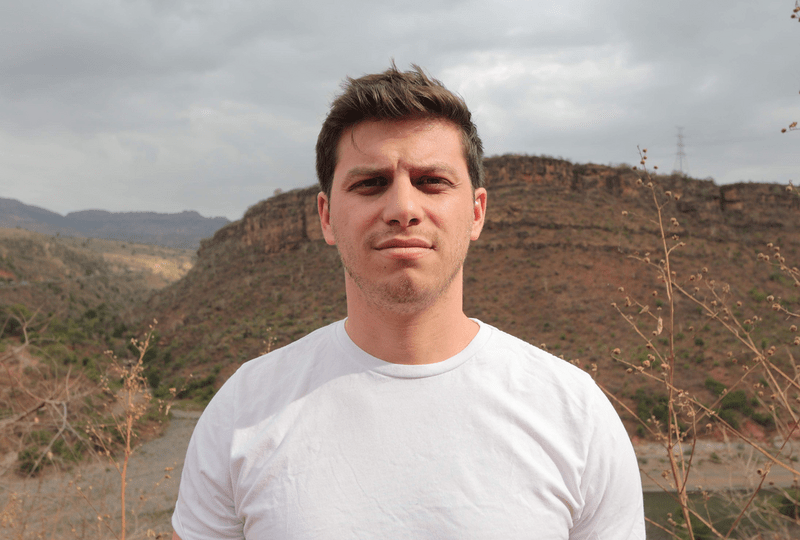LAF Fellowship Spotlight: Mega-Eco Projects for a Changing Climate

It was nearly a decade ago when Robert Levinthal made his first trip to Senegal in West Africa and got a firsthand look at one of the frontlines of climate change. With an undergraduate degree in environmental science, Rob served as an agroforestry agent in the Peace Corps and saw for himself how desertification and land degradation were affecting communities along the edge of the Sahara Desert. During this time, Rob stumbled upon Ian McHarg’s Design with Nature, and he saw a road sign for the Great Green Wall Initiative, a massive, multi-country anti-desertification effort underway just 100km north of where he was staying. The experience had a profound impact on Rob and dramatically changed his career path.
Today, Rob is a 2022-23 LAF Fellow and PhD candidate at the University of Pennsylvania who is examining large-scale ecological restoration and construction endeavors, including the Great Green Wall Initiative, that he and his advisor, Professor and Chair Richard Weller, call mega-eco projects. Approximately 250 of these projects exist worldwide, according to criteria that incorporates scale, cost, and a shared vision of helping communities and biodiversity adapt and respond to climate change and environmental degradation.
Rob’s Fellowship and PhD work complement each other. Through this work, he has organized mega-eco projects into four types: metropolitan, watershed, anti-desertification, and connectivity that are built to serve a variety of purposes. Rob is studying the impact of these projects, and through the Fellowship is examining the role landscape architects play in them and ways designers can most effectively influence their creation moving forward.
“These mega-eco projects are often seen as environmental panaceas, and we have to understand if they’re working or not because they operate at a scale commensurate with the problem and seem to be proliferating,” Rob said. “Yet they may also be the biggest cases of greenwashing we have, following the tendency of concrete and steel megaprojects of being over time, over budget, and underperforming, wasting precious resources needed to combat the extinction crisis and global warming.”
Earlier this year, Rob returned to Senegal to conduct a case study on the Great Green Wall – the same project that intrigued him as a Peace Corps Volunteer nearly a decade ago. Rob performed an extensive literature review and interviews to gather firsthand accounts from locals on the impacts of the project, which shares a unified vision of widespread land restoration across the continent to stop the encroaching desert. Rob used the interviews to measure local buy-in, perceptions on changes in the environment and livelihoods, and other topics, including displacement, immigration, and resilience. This work will help fill an existing knowledge gap about the impacts of nature-based solutions in Sub-Saharan Africa.
“Emerging economies require nature-based solutions because the residents feel the effects of climate change the most and this will only get worse,” Rob said. “I want to speak directly with local stakeholders and leadership of the Great Green Wall to help amplify their voices and try to understand if the written literature matches their ideas of this project and place.”
Along with the site visits, literature reviews, and firsthand accounts, Rob has been examining how landscape architects and regional planners have been involved in the planning and implementation of mega-eco projects; what tools, methods and contributions the discipline of landscape architecture has made to/on these works; what opinions design practitioners and academics have on successful implementation and best practices; and how the mega-eco projects “phenomenon” can be disseminated to landscape architects, allied professionals, and the general public for greater interest and understanding.
Ultimately, Rob will conduct three more case studies to gather important qualitative and quantitative data on a range of projects that will determine their impact and effectiveness. That information can be used to inform future projects. Rob feels landscape architects and allied professionals are positioned to make valuable contributions to mega-eco projects. He also wants to take on an advocacy role and urge design professionals to get more involved in these endeavors in the near future – a desire to create change that dates back to his first time in Senegal, when he was inspired by landscape architecture and its ability to impact the world through design.
“I think landscape architects and allied disciplines have something to offer here,” Robert said. “These projects need professionals who can think spatially, design and collaborate with local stakeholders, and who are trained to work across scales. Landscape architects and regional planners were heavily involved in the early formation of mega-eco projects but are conspicuously absent in the present day. For greater relevance, the discipline needs to push its presence into these works and further develop the skills necessary to impact these works once again.”
UPDATE: You can watch Rob's presentation from the 2023 LAF Innovation + Leadership Symposium here.










